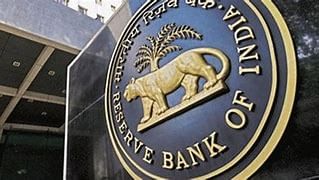UPSC Daily Current Affairs- 26th December 2023 | Current Affairs & Hindu Analysis: Daily, Weekly & Monthly PDF Download
GS-I
Veer Bal Diwas
Subject: Art and Culture

Why in News?
The Prime Minister paid homage to the courage and sacrifice of the Sahibzade, the sons of Guru Gobind Singh, the tenth Sikh Guru.
- This day, announced on January 9, 2022, commemorates the martyrdom of Sahibzada Zorawar Singh and Sahibzada Fateh Singh.
Veer Bal Divas: A Day of Remembrance
- Inception: Veer Bal Divas was established to honor the young Sahibzade who were martyred at the ages of 6 and 9.
- Guru Gobind Singh’s Legacy: Guru Gobind Singh, as the tenth Guru of Sikhs and founder of the Khalsa, holds a significant place in Sikh history.
The Legend of the Sahibzades
- Meaning of Sahibzada: In Punjabi, “Sahibzada” means “son,” referring to the four sons of Guru Gobind Singh.
- Sacrificial Week: The week from December 21 to 27 is observed in memory of the Sahibzades’ sacrifices for Sikhism and Hinduism.
- Martyrdom for Faith: The Sahibzades, Ajit Singh, Jujhar Singh, Zorawar Singh, and Fateh Singh, were martyred defending their faith against forced conversion.
Backstory of Their Martyrdom
- Khalsa Panth and Anandpur Sahib: After establishing the Khalsa Panth, Guru Gobind Singh left Anandpur Sahib with his family in December 1704 amidst Aurangzeb’s invasion.
- Capture and Martyrdom: The younger Sahibzades were captured by Subedar Wazir Khan of Sirhind and faced pressure for religious conversion, leading to their tragic martyrdom.
- Elder Sahibzades’ Sacrifice: The elder Sahibzades, Ajit Singh and Jujhar Singh, were martyred in the battle of Chamkaur in 1705.
Implications and Historical Impact
- Guru Gobind Singh’s Response: Upon learning of their martyrdom, Guru Gobind Singh wrote the ‘Zafarnama’ to Aurangzeb, declaring the Khalsa’s readiness to challenge his empire.
- Baba Banda Singh Bahadur’s Revenge: He avenged the Sahibzades’ martyrdom, punishing Wazir Khan and establishing Sikh dominance in the region.
- Emergence of the Sikh Empire: This sacrifice paved the way for the later establishment of a vast Sikh empire under Maharaja Ranjit Singh.
Significance in Indian History
- A Watershed Moment: The martyrdom of the Sahibzades is a pivotal event in Indian history, remembered with both respect and sorrow.
- Legacy in Sikh Tradition: The Sahibzades’ names are honored in the Sikh Ardas, symbolizing their enduring legacy in Sikh faith and history.
Source: Indian Express
Goa’s Konsachem Festival and St. Bartholomew’s Feast
Subject: Art and Culture

Why in News?
In Goa, August marks the formation of new rice grains, celebrated through the festival of Konsachem.
Konsachem Festival and Its Traditions
- Background: Konsachem, observed by Goan Hindus and Catholics, honors the new rice grains, known as konxeo in Konkani.
- Shared Rituals: The first harvested rice sheaves are taken for blessings – to deities by Hindus and to saints by Catholics.
- Catholic Celebrations: For Goan Catholics, the festival peaks on August 24, the Feast Day of St. Bartholomew, one of Jesus Christ’s 12 Apostles.
- Observances: The celebration includes a procession, ritual cutting of grain, and a thanksgiving mass, with offerings made to St. Bartholomew.
Bartholomew’s Legacy and Christian Faith in India
- Missionary Journey: Bartholomew is believed to have landed in Kallianpur and preached along the Konkan coast, reaching as far as Karachi.
- Lesser-Known Apostles: While St. Thomas’s mission in Kerala and Tamil Nadu is well-documented, St. Bartholomew’s contributions in India are less known but significant.
- Martyrdom and Influence: He is revered for his martyrdom in Azerbaijan and his role in the Christianization of Armenia and Georgia.
- Pre-Portuguese Christian Origins: Research by scholars underscores Christianity’s roots in India dating back to the Apostles, reinforcing its integral place in Indian faith traditions.
Source: Indian Express
GS-II
Mission Karmayogi
Subject: Government Schemes

Why in News?
Recently, on the occasion of Good Governance Day the Union Minister of Personnel, Public Grievances & Pensions launched the Extended Version of Mission Karmayogi, at a function in New Delhi.
- Mission Karmayogi - National Programme for Civil Services Capacity Building (NPCSCB) aims to prepare Civil Servants for the future by making them more creative, constructive & innovative through transparency and technology.
- This unique programme will help to lay the foundation for civil servants in the country.
- There will be more focus on 'on-site learning' in complementing "off-site learning".
- On 2nd September 2020, Government approved the National Programme for Civil Services Capacity Building (NPCSCB) with six key pillars including Policy Framework, Institutional Framework, Competency Framework, Digital Learning Framework (iGOT-Karmayogi), the electronic Human Resource Management System (e-HRMS) and the Monitoring and Evaluation Framework.
- The Programme will cover all civil servants (including contractual employees) across different ministries, departments, organizations and agencies of the Union Government.
- Three new features launched on the iGOT Karmayogi platform are
- My iGOT: It delivers targeted training courses on the home page of individual officer that directly address the unique capacity building needs of the officer as identified in the Capacity-Building Plan for their Ministries/Departments.
- Blended Programs: This programme will facilitate equitable access to training methodologies across all levels to meet dynamic training needs of the officials.
- Blended Programs integrate traditional offline (in person) classroom courses with online learning components.
- It enables officers and faculty to leverage the flexibility and convenience of online courses while retaining the invaluable benefits of face-to-face classroom interactions.
- Curated Programs: These are designed to cater to diverse learning needs of the Ministries/Departments and Training Institutions.
- This Course Providers will be able to curate relevant content, resources, and assessments from the repository of iGOT with a Programmatic approach to provide a tailored learning journey.
Source: PIB
GS-III
RBI reports reduced risk of Stagflation in India
Subject: Economy

Why in News?
The Reserve Bank of India (RBI) officials have reported a decreased risk of stagflation in India, now estimated at 1%, down from 3% in August
What is Stagflation?
| Details | |
| Definition |
|
| Indian context |
|
| Inflation Dynamics in India |
|
| Supply Shocks |
|
| Past Episodes |
|
Methodology for Assessing Stagflation
- Two-Pronged Approach: RBI assessment utilized two methods: analyzing periods of low economic growth with high inflation, and employing ‘at-risk’ frameworks, namely “Inflation at Risk” (IaR) and “Growth at Risk” (GaR), using quantile regression.
- Determinants of Stagflation: Key factors identified include supply-side shocks, commodity price spikes, tighter financial conditions, and currency depreciation.
Key Risk Factors for India
- Financial Conditions and Rupee Depreciation: Financial conditions and the depreciation of the rupee against the U.S. dollar are significant risk factors for stagflation in India.
- Empirical Evidence: The integrated IaR and GaR frameworks corroborate these findings, although the impact of crude oil prices on domestic fuel prices has limited predictive power for stagflation.
- Global Concerns: Post-pandemic, higher commodity prices and the U.S. dollar’s appreciation raised global stagflation concerns.
Source: The Hindu
India’s Disinvestment Strategy amidst upcoming Elections
Subject: Economy

Why in News?
India’s disinvestment process, primarily focusing on minority stake sales rather than full privatisation, is expected to fall short of its fiscal year 2024 target.
- The government’s cautious approach, influenced by the upcoming general elections, has led to a slowdown in the privatisation of major public sector undertakings (PSUs).
Disinvestment Performance and Targets
- Past Achievements: Over the past decade, disinvestment has generated over ₹4.20 lakh crore, but the current fiscal year’s target appears challenging.
- FY24 Target: The government set a disinvestment goal of ₹51,000 crore for FY24, a reduction from the previous year’s estimate.
- Major PSUs on Hold: Plans for the privatisation of Bharat Petroleum Corporation Ltd (BPCL), Shipping Corporation of India (SCI), and CONCOR have been deferred.
- Progress So Far: Approximately ₹10,049 crore, or 20% of the budgeted amount, has been raised through IPOs and OFS.
- Pipeline Projects: Strategic sales of CPSEs like SCI, NMDC Steel Ltd, BEML, HLL Lifecare, and IDBI Bank are planned but face delays due to various procedural hurdles.
Factors Influencing Disinvestment
- Political Considerations: Strategic disinvestment decisions are being influenced by the upcoming elections, leading to a cautious approach.
- Challenges in Strategic Sales: The sale process involves multiple stakeholders and complex procedures, making it a lengthy affair.
- Public and Political Resistance: Certain sectors, particularly defence and shipping, face opposition to privatisation, causing delays and policy reassessments.
- Economic Think Tank Views: Observers note a recent slowdown in PSU stake sales, attributed to regulatory processes, global economic volatility, and shifting government priorities.
Historical Context and Government Policy
- Post-2014 Strategy: Since 2014, the government has revived its disinvestment policy, focusing on stake sales and listing of PSEs on the stock market.
- Union Budget 2023-24: The disinvestment target for FY24 is the lowest in seven years, with the government yet to meet the target for 2022-23.
- Reasons for Disinvestment: The government undertakes disinvestment to reduce fiscal burdens, finance deficits, invest in development, and retire debt.
- Types of Disinvestment: The process includes minority disinvestment, majority divestment, and complete privatisation, managed by the Department of Investment and Public Asset Management (DIPAM).
Recent Disinvestment Performance
- Meeting Targets: The government has met its disinvestment targets only twice since 2014.
- Challenges in Execution: Strategic sales have been complicated by various factors, including market volatility and political opposition.
Future of Disinvestment in 2023-24
- No New Additions: The government plans to continue with the already announced privatisation of state-owned companies without adding new ones.
- Challenges and Vision: Observers suggest that disinvestment should align with the government’s long-term vision for privatisation and sectoral presence, rather than being driven solely by revenue needs.
Conclusion
- Strategic Policy Shifts: The government’s disinvestment strategy is evolving, balancing between raising revenues and managing political and public sentiments.
- Impact of Upcoming Elections: With general elections approaching, the focus on disinvestment might shift, impacting the progress and priorities of stake sales.
Source: The Hindu
OSIRIS-APEX
Subject: Science and Technology

Why in News?
In an unprecedented extension of its celestial duties, the spacecraft that delivered asteroid samples from Bennu, OSIRIS-REx, has embarked on a new mission, and NASA has renamed it as OSIRIS-APEX.
- It is a mission to study the physical changes to asteroid Apophis that will result from its rare close encounter with Earth in April 2029.
- That year, Apophis’ orbit will bring it within 20,000 miles (32,000 kilometers) of Earth’s surface — closer to Earth than our highest-altitude satellites.
- The mission aims to observe the physical changes induced by Earth's gravitational pull during Apophis' flyby.
- These changes could include alterations in the asteroid's orbit, rotation speed, and surface features such as quakes or landslides.
- Additionally, the OSIRIS-APEX spacecraft will dip toward the surface of Apophis.
- It was discovered on June 19, 2004.
- It is a stony "S-type" asteroid made of silicate (or rocky) material and a mixture of metallic nickel and iron
- It is a remnant from the early formation of our solar system about 4.6 billion years ago.
- It originated in the main asteroid belt between Mars and Jupiter.
- Over millions of years, its orbit was changed primarily by the gravitational influence of large planets like Jupiter so that it now orbits the Sun closer to Earth.
- As a result, Apophis is classified as a near-Earth asteroid, as opposed to a main-belt asteroid.
Source: India Today
X-ray bursts
Subject: Science and Technology

Why in News?
About:-Recently, India’s first multi-wavelength space-based observatory AstroSat has detected bright sub-second X-ray bursts from a new and unique neutron star with ultrahigh magnetic field (magnetar).
- It occurs in low-mass X-ray binary systems where a neutron star and low-mass main sequence star are in orbit around one another.
- Due to their close proximity and the extreme gravity of the neutron star, the companion star overflows its roche-lobe and hydrogen is drawn into an accretion disk around the neutron star.
- This hydrogen is eventually deposited on the surface of the neutron star and immediately is converted into helium due to the extreme temperatures and pressures that exist there.
- A thin surface layer of helium is built up, and once a critical mass of helium is reached, it ignites explosively, heating the entire surface of the neutron star to several tens of millions of degrees releasing a sudden burst of X-rays.
- Once the outburst is over, the binary system temporarily returns to its quiescent state while the neutron star begins to re-accumulate the helium surface layer.
- The process repeats resulting in recurrent X-ray bursts.
- It generally occurs at regular intervals separated by several hours or days.
- It is an exotic type of neutron star, its defining feature that it has an ultra-powerful magnetic field.
- The field is about 1,000 times stronger than a normal neutron star and about a trillion times stronger than the Earth’s.
- Apart from ultra-powerful magnetic fields, magnetars also release vast amounts of energy in the form of flares, X-rays, and gamma-ray bursts.
- They are therefore associated with extreme events in the universe, making them perhaps the most bizarre objects in the cosmos next to black holes.
- The magnetic field of a magnetar may be caused by a neutron star’s interior – thought to be made up of neutrons, quarks and exotic states of matter such as Bose-Einstein Condensates – becoming a superconducting fluid.
Source: PIB
|
38 videos|5293 docs|1118 tests
|
FAQs on UPSC Daily Current Affairs- 26th December 2023 - Current Affairs & Hindu Analysis: Daily, Weekly & Monthly
| 1. What is Veer Bal Diwas? |  |
| 2. What is the significance of the Konsachem Festival in Goa? |  |
| 3. What is St. Bartholomew's Feast? |  |
| 4. What is Mission Karmayogi? |  |
| 5. What is the RBI's assessment of stagflation in India? |  |





















